The jazz greats like Billie Holiday and Frank Sinatra sang it best: autumn in New York really does seem so inviting. And as the breeze cools and the leaves begin to turn, it felt like the appropriate time to round up a selection of objects from Cooper Hewitt’s collection that represent the magic of the city this time of year.
Poster, New York City Ballet, 1974–75
Designed by Edward Gorey (American, 1925–2000)
Offset lithograph on paper
66 × 30.5 cm (26 × 12 in.)
Gift of Unknown Donor, 1980-32-976
Author and illustrator Edward Gorey was an admirer of choreographer George Balanchine and a regular audience member at New York City Ballet, whose season opening at Lincoln Center is a fall staple for the city. For the ballet company, Gorey created posters that could be printed and sold in their gift store. An example is this eye-catching lithograph on paper, featuring a pair of pointe shoes ascending from first to fifth position.
Drawing, New York from Long Island City, 1964
Designed by Ely Jacques Kahn (American, 1884–1972)
Brush and watercolor, graphite on paper
39.4 × 29.2 cm (15 ½ × 11 ½ in.)
Gift of Ely Jacques Kahn, 1967-81-12
This illustration, in watercolor and graphite, perfectly captures the moody early evening light of autumn.
Drawing, Carpet Design: “Singing Women,” Radio City Music Hall Main Auditorium, New York, NY, 1932
Designed by Donald Deskey (American, 1894–1989)
Client: Radio City Music Hall (New York, New York, USA)
Brush and brown, tan, and purple gouache, graphite on heavy cream wove paper
62.1 x 104.9 cm (24 7/16 x 41 5/16 in.)
Gift of Donald Deskey, 1975-11-56
Drawing, Carpet Design: Guitars and Cocktail Glasses for Radio City Music Hall, 1260 Sixth Avenue, New York, NY, 1932
Designed by Donald Deskey (American 1894–1989)
After Ruth Reeves (American, 1892–1966)
Client: Radio City Music Hall (New York, New York, USA)
Brush and gouache, graphite on cream illustration board, lined
29.7 x 35.1 cm (11 11/16 x 13 13/16 in.)
Gift of Donald Deskey, 1975-11-42
Carpet, Musical Instruments, designed 1932, reproduced 1979
Designed by Ruth Reeves (American, 1892–1966)
Manufactured by Milliken & Company (founded 1865)
Machine-woven wool and nylon pile
273.7 x 238.8 cm (107 ¾ x 94 in.)
Gift of Amy Biehl and Demetri Karousos, 2022-24-1
Donald Deskey formed Donald Deskey Associates in the mid-1940s and was one of the 15 founders of the Society of Industrial Designers in 1944. Deskey is well-known for his designs for the furnishings and interiors of Radio City Music Hall in 1932, on which he collaborated with textile designer Ruth Reeves, who had studied alongside him with Fernand Léger in Paris. Seen here are two designs for carpets.
Print, New York, New York!, 1950
Designed by Sue Feller (American, 1914–2006)
Lithograph in three colors, stencil on paper
62.8 × 42.8 cm (24 ¾ × 16 7/8 in.)
Museum purchase from Pauline Riggs Noyes Fund, 1954-161-2
The frenetic energy and subdued coral hues of Sue Feller’s print call to mind the pops of fall foliage between the city’s endless blocks of buildings.
Textile, New York Panorama, 1934–38
Manufactured by Springs Mills (Fort Mill, South Carolina, USA)
Printed plain-weave cotton
184.8 × 88.3 cm (72 ¾ × 34 ¾ in.)
Museum purchase from General Acquisitions Endowment Fund, 1988-55-1
In this textile by manufacturer Springs Mills, the pattern clearly depicts the architecture of New York City, from the Brooklyn and Manhattan bridges to iconic skyscrapers like the Empire State and Chrysler buildings.
Textiles, Variations, 1950–59
Designed by Charles Child (American, 1902–1983)
Manufactured by Morley Fletcher Ltd. (New York, New York, USA)
Silkscreen printed on twill-weave linen
76 × 66 cm (29 15/16 × 26 in.)
1954-66-9
Textile, 1950–59
Designed by Anne O. Todd
Manufactured by Morley Fletcher Ltd. (New York, New York, USA)
Screen-printed linen
362.5 × 136 cm (142 11/16 × 53 9/16 in.)
Gift of Anonymous Donor, a-t-838
These textiles, by Charles Child and Anne O. Todd, were manufactured by New York City–based company Morley Fletcher Ltd. and evoke the neutral, earthy palettes of New York in the fall.
Drawing, Hudson, New York, at Twilight, 1860–65
Designed by Frederic Edwin Church (American, 1826–1900)
Oil and graphite on canvas
22.7 × 31.7 cm (8 15/16 × 12 ½ in.)
Gift of Louis P. Church, 1917-4-1346-b
While not quite New York City, the deeply saturated sunset depicted in Church’s illustration of Hudson, New York, is an autumnal staple in the region, something that countless New Yorkers have witnessed from balconies, rooftops, office windows, and trains on the commute home.
Hanging, New York Waterfront, 1926–53
Designed by Lydia Bush-Brown (American, 1887–1984)
Handdrawn wax-resist dyed (batik) silk
90.5 x 123 cm (35 5/8 x 48 7/16 in.)
Gift of Lydia Bush-Brown, 1974-23-6
Lydia Bush-Brown’s acclaimed wax-resist illustrations depicted imagined and real scenes, including the Manhattan skyline (as seen in the example here). This particular illustration showcases the city’s industrial expansion in the first half of the 20th century, complete with in-progress skyscrapers and endless wisps of factory smoke.
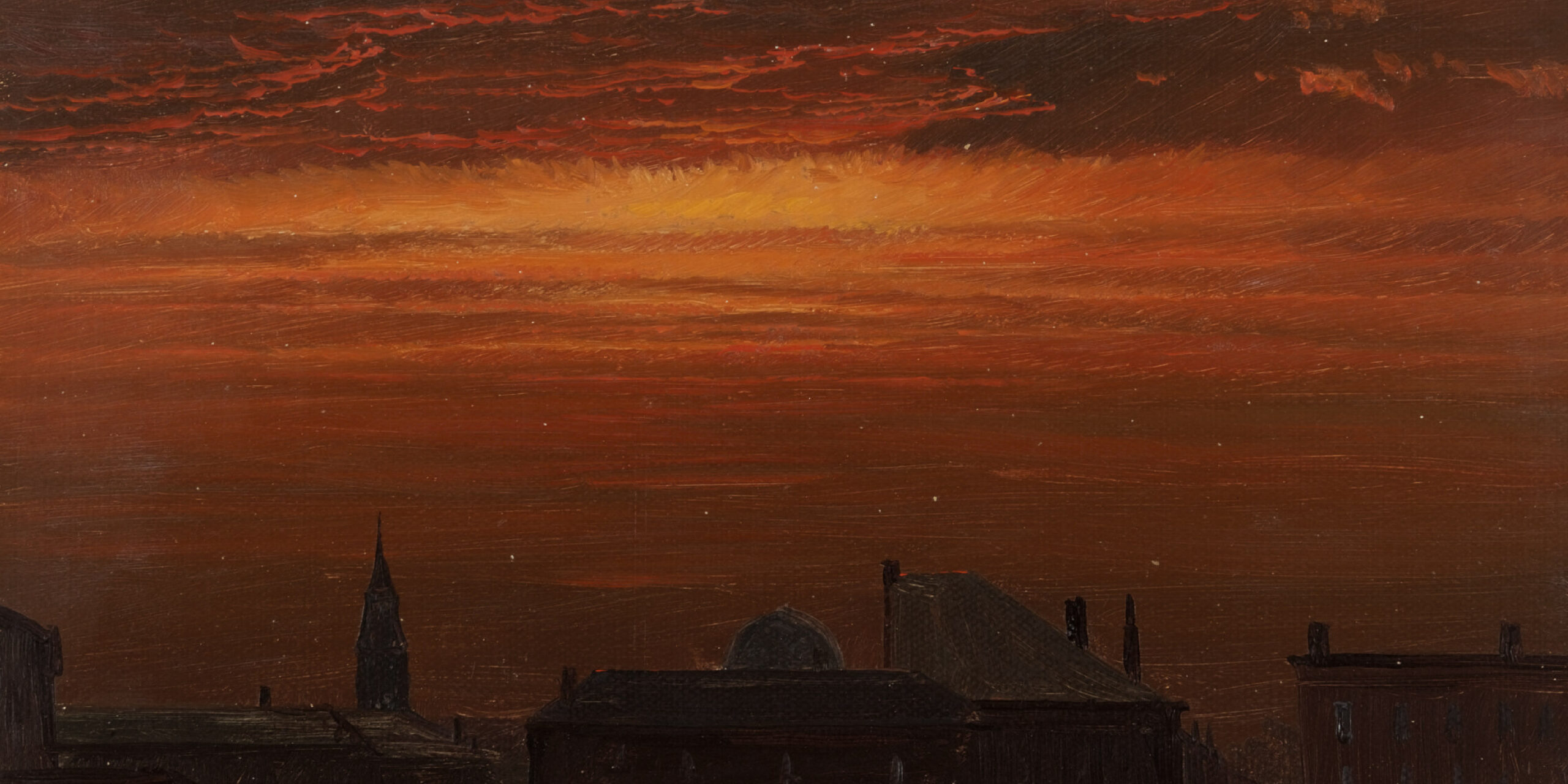


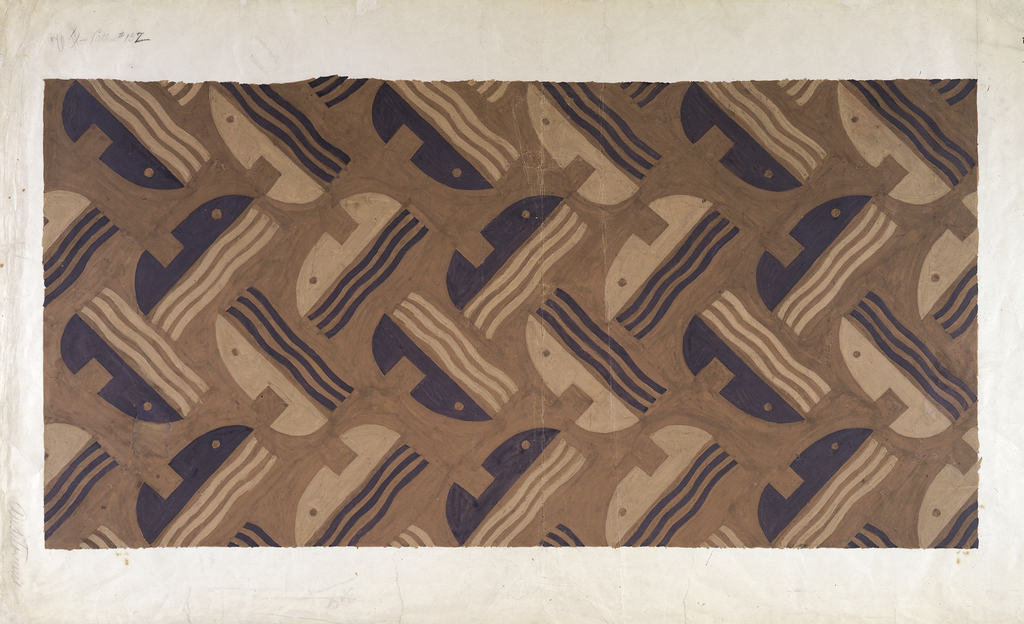
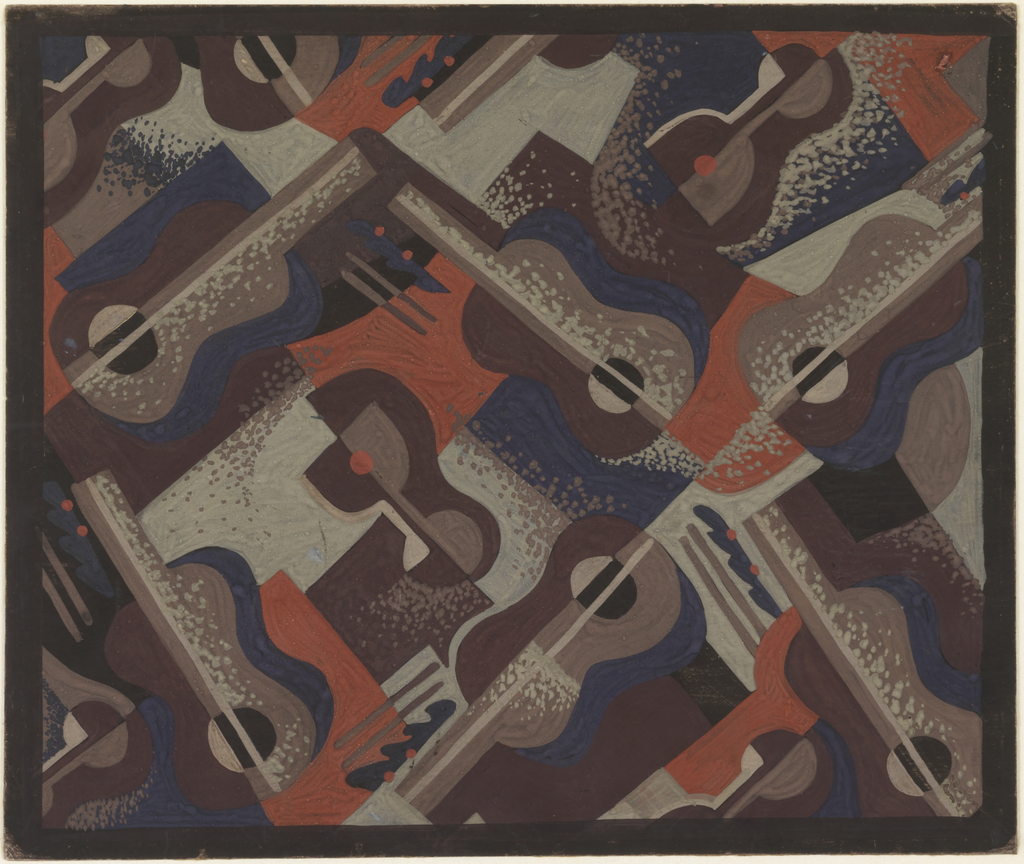
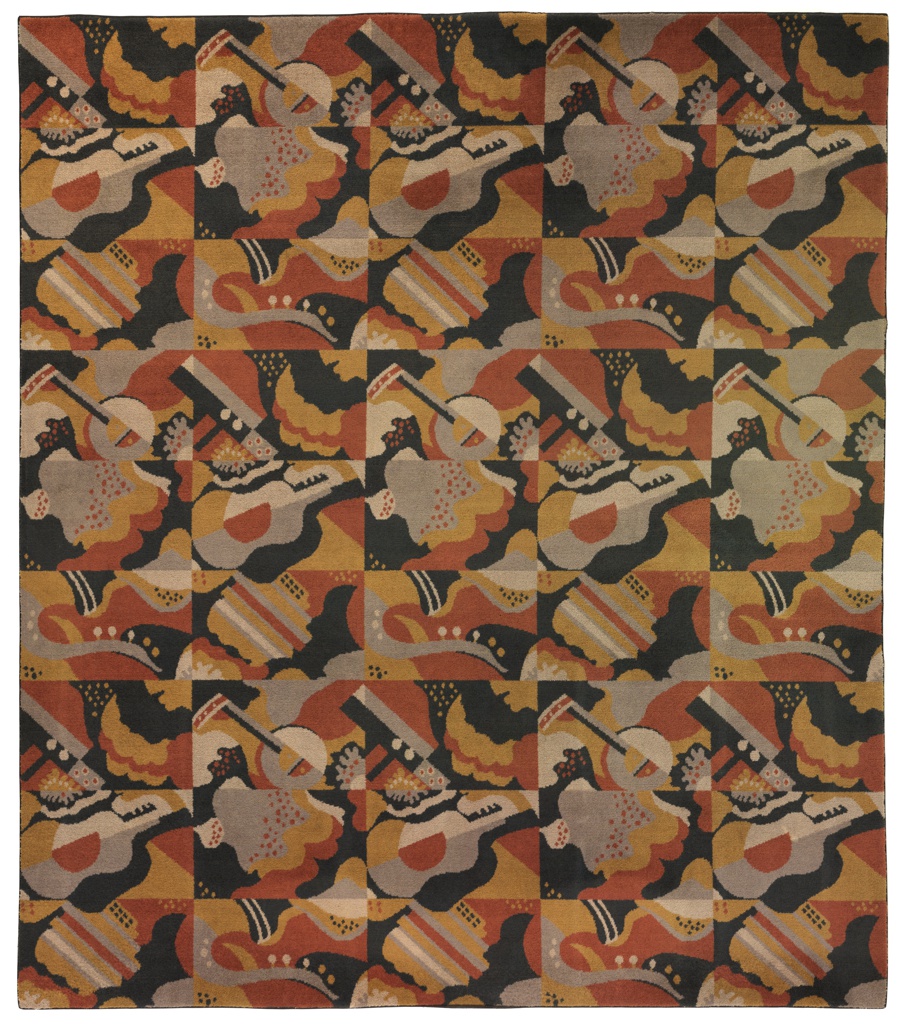
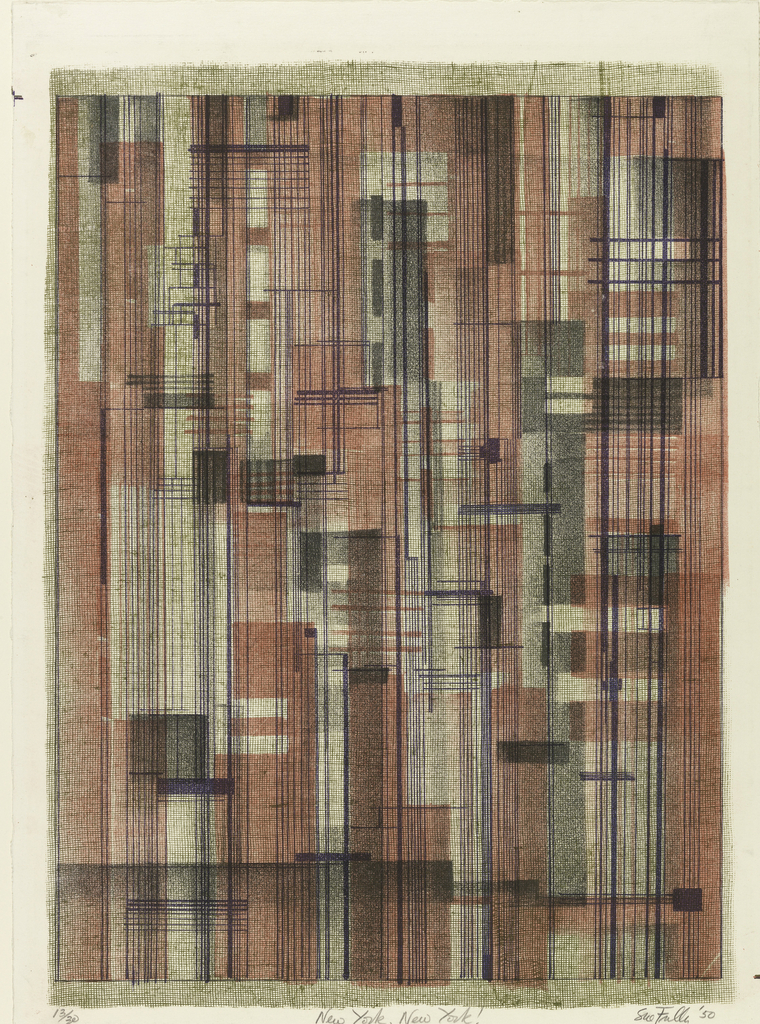


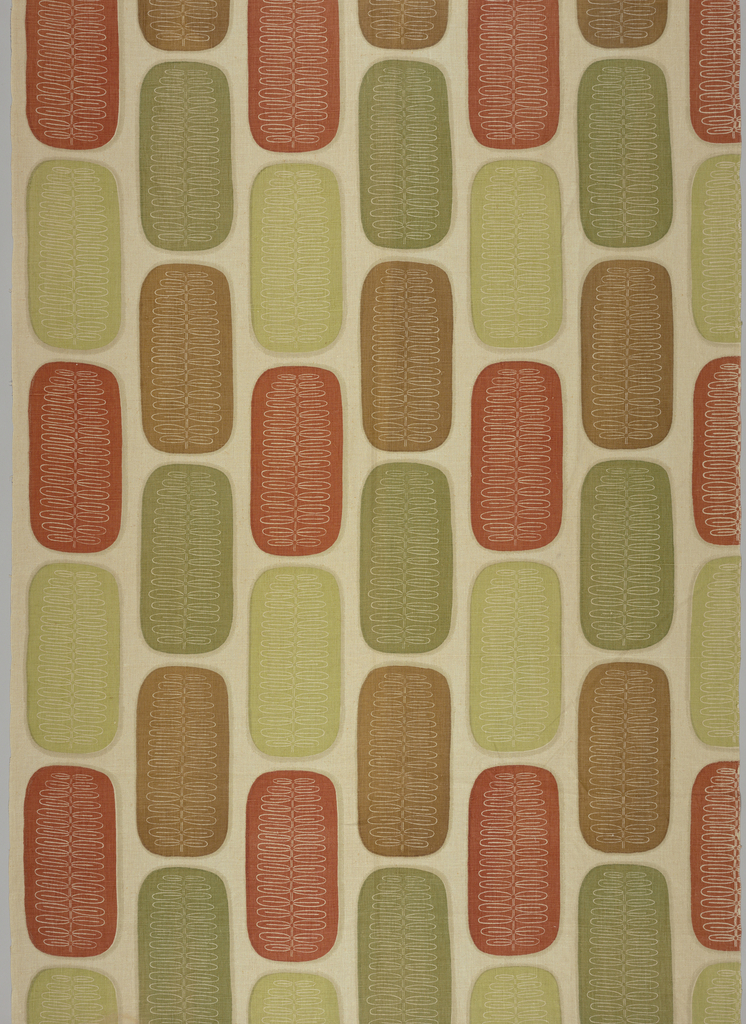
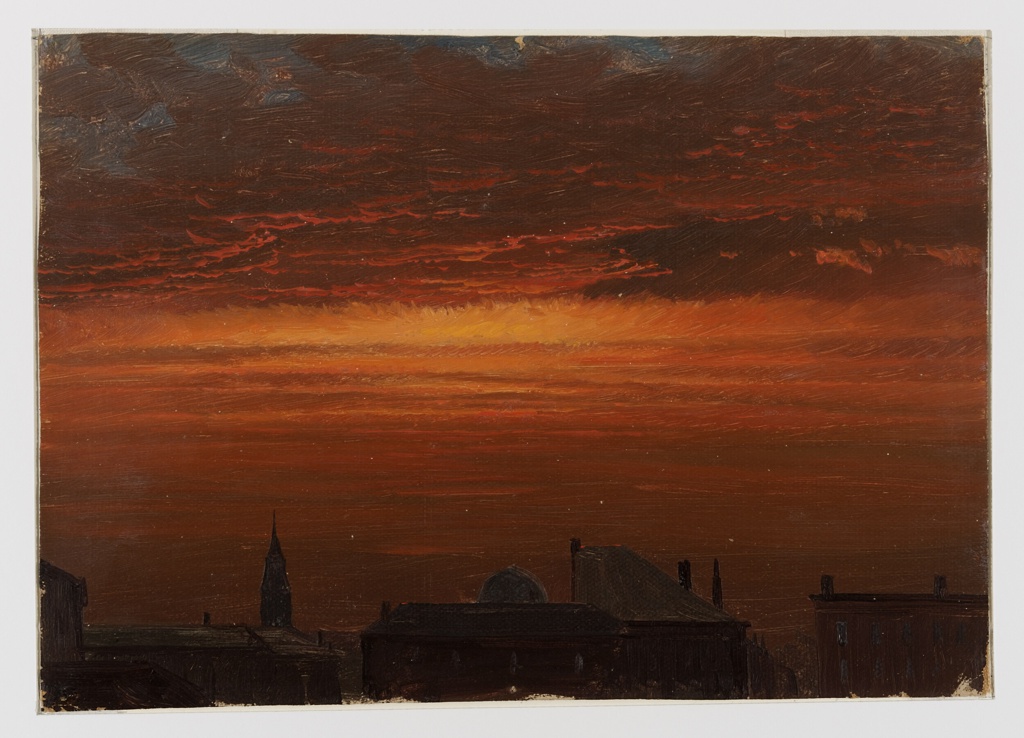
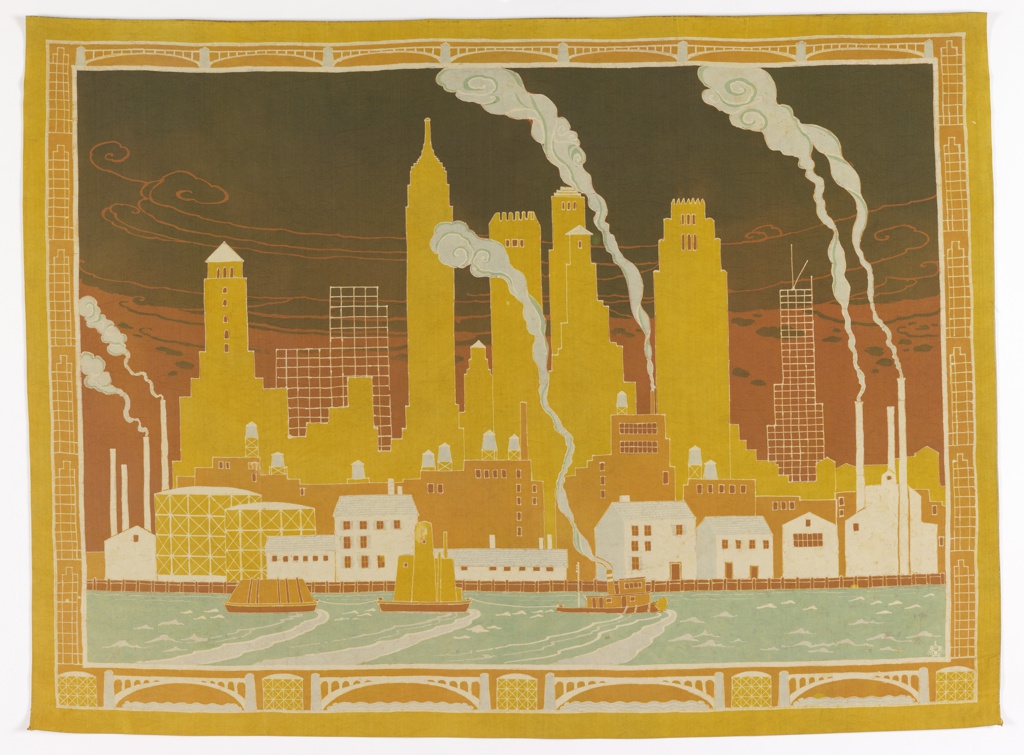
One thought on “Autumn in New York”
Barbara Reed on September 16, 2024 at 12:01 pm
You have a typo in the artist’s name on one of the print labels:
Print, New York, New York!, 1950
Designed by Sue Feller (American, 1914–2006)
Lithograph in three colors, stencil on paper
62.8 × 42.8 cm (24 ¾ × 16 7/8 in.)
Museum purchase from Pauline Riggs Noyes Fund, 1954-161-2
The frenetic energy and subdued coral hues of Sue Feller’s print call to mind the pops of fall foliage between the city’s endless blocks of buildings.
Here’s the same print in the Met’s collection catalog, with the correct artist name: Sue Fuller
Title: New York, New York!
Artist: Sue Fuller (American, Pittsburgh, Pennsylvania 1914–2006 Southampton, New York)
Date: 1950
Medium: Lithograph
Dimensions: sheet: 26 3/16 x 19 15/16 in. (66.5 x 50.7 cm)
Classification: Prints
Credit Line: Purchase, Derald H. and Janet Ruttenberg Gift, 1994
Accession Number: 1994.29.1